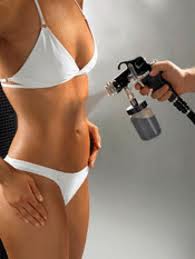According to the Mayo Clinic, sunless tanning products are a practical alternative to sunbathing, but they have to be used carefully. They have been around for years and continue to improve (remember the earlier versions that streaked your legs and colored the palms of your hands orange!). Sunless tanner are products that provide a tanned appearance without exposure to the sun or a tanning booth. The active compound is dihydroxyacetone (DHA), a color additive that temporarily darkens the skin by reacting with amino acids in the skin surface. The coloring does not wash off (like it does with cosmetic bronzers) but it fades as the top layer of skin sloughs off, typically in a few days. The U.S. Food and Drug Administration does not regulate sunless tanners but it does regulate color additives which includes DHA. However, its use is restricted to external use only which by the FDA definition excludes applying to the eye area (lids, lashes, skin below the eyebrow and skin below the eye) or any body surface covered by mucous membrane such as the lips. The FDA has not issued any safety data on the misting action of tanning booths.
If you are getting a sunless tan spray, it is important that you take adequate precautions to cover your eye area and lips. DHA is not approved for internal use so take care not to inhale or ingest the product. Also, most sunless tanning products do NOT contain sunscreen so if you go out in the sun, be sure to lather up with sunscreen.
On a final note, tanning pills generally contain the pigment, canthaxanthin. While this chemical has been approved as a food additive, it is not approved as a tanning agent. The amount of canthaxanthin in tanning pills is much more concentrated than what is used as a food coloring additive, and serious side effects such as liver disease have been reported. Avoid the tanning pills.

 A recent
A recent
Comments